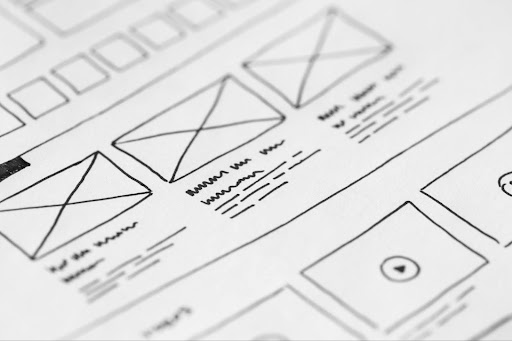4 Strategies for Effective UX Research and User-Centric Design
Sometimes it’s inevitable to come across words that we don’t quite understand. It’s normal. As we get older, we surely google from time to time those Gen Z words, lurking in that secretive world full of the mysteries we want to be a part of.
Why is this important, you ask, especially in this case? Well, it’s the same condition so to speak. We want to be a part of something, and we wish to understand it better. So, what do we need to understand about UX research and user-centric design? It’s quite a compelling world where those two are combined, and incorporating these practices is not a choice; it’s more of a must.
Knowing what strategies are the most lucrative when you want to incorporate this powerful duo is also a necessity. And the need to understand it well before doing so can also play a huge part in the scenario.
So, let’s get going and meet the shining superstars of user experience.

Source: Photo by Fabian Wiktor: https://www.pexels.com/photo/person-writing-on-white-paper-3471423/
The essence of UX research and user-centric design
The success of any product depends on delivering knockout user experiences. You already know the drill, the excitement, and the delight of being mesmerized by the captivating website.
UX research is kind of like detective work—the Sherlocky kind—by cracking users’ behaviors and motivations to stimulate the design process. When you dive deep into the audience’s psyche, voila! You can now create designs that adapt to their tastes.
Why does UX research matter? Understanding the significance of UX research is akin to possessing a roadmap of treasures to identify users’ pain points, preferences, and goals. When you’re armed with these significant insights, informed design decisions can be made, resulting in elevated user satisfaction and a notable increase in conversion rates.
Conversely, user-centric design centers on placing the user at the center of the design process.
By identifying with their viewpoints, understanding their needs, and designing products that support those goals, this method encourages communication and improves the user experience as a whole. The rationale behind adopting the strategies lies in their transformative impact, especially if you consider them as tools that will ensure the functionality, flexibility, user-friendliness, and overall visual appeal of your products.
Achieving exemplary UX research and user-centric design is not something you should fast forward to, just like when you’re watching the boring part of the movie you’ve already seen. It’s something you should be careful, gentle, and tactful about.
Particularly, if you decide to implement these methodologies, you should understand that this will elevate your brand’s digital presence and craft experiences that will distinguish your brand in the open, scary, and competitive digital world.
1. Define clear research goals and questions
Before you decide to embark on any UX research project, it’s fundamental to define clear research objectives and questions. This strategy sets the foundation for successful user-centric design. If your research goals are unclear, you might end up gathering data that is incomplete or irrelevant and fails to meet the needs of your users.
Start by identifying the specific goals you want to achieve through your research. Are you aiming to gather information about user behaviors, preferences, or pain points? Are you looking to validate or iterate on existing design concepts? Clearly defining your research objectives will guide your entire process and help you stay focused on what matters.
Once you’ve established your goals, the next step is to formulate research questions that will guide your data collection efforts. These questions should be specific, measurable, achievable, relevant, and time-bound (SMART). They should also align with your research objectives and address the key areas you want to explore.
For example, consider this method: visualize yourself crafting an e-commerce website. Your research questions become beacons of exploration:
- How do users navigate through the website to find products they are interested in?
- What factors influence users’ decision-making process when finalizing a purchase?
- Are there identifiable pain points or sources of frustration during the checkout process?
In setting out precise research targets and questions, you pave the way for a purposeful expedition in UX research. This carefully planned strategy guarantees the acquisition of relevant data, shapes the design decisions, and culminates in the creation of a user-centric experience that not only aligns with but outpaces the needs and anticipations of your target audience.

Source: Photo by picjumbo.com from Pexels: https://www.pexels.com/photo/white-printer-paper-196645/
2. Find the right UX research tools and methods
Choosing the right research methods and tools is urgent for carrying out effective UX research and performing user-centric design. With so many offers available, it’s important to select the ones that align with your research goals and target audience.
One popular research method is conducting user interviews. By doing this, you can interact with your target audience instantly and learn vital information about their requirements, preferences, and pain points. By asking open-ended questions and listening attentively, you can uncover helpful knowledge that informs your design decisions.
Usability testing is another helpful process that entails watching users as they encounter a product or prototype, spotting any usability problems, and getting user feedback. Usability testing can be conducted in-person or remotely, depending on your resources and the nature of your research.
Surveys and questionnaires are also valuable tools for gathering quantitative data. By creating well-designed surveys and distributing them to your target audience, you can collect valuable feedback at scale. Making this kind of connection with your audience can benefit your brand as well, as it is a slightly different kind of communication.
Using a variety of communication styles shows your audience that your business values their feedback and is interested in getting to know them.
And there’s more—UX research tools, analytics, and heat mapping—to illustrate the path to understanding user behavior. Investigate metrics like page views, click-through rates, and time spent on specific pages, gaining deep insights to sweeten user engagement and refine your design.
Always keep in mind that the secret is to select the research techniques and resources that best suit your goals and the needs of your audience. It’s necessary to combine both qualitative and quantitative approaches to gather a thorough understanding of your users’ experiences and choices. With the correct tools, you can gain insights that help guide user-centric design choices and propel the success of your good or service.
3. Recruit the right participants for your analysis
Selecting the appropriate participants for your user experience research is essential to getting valuable insights and making sure your user-centric design works. Resist the temptation to involve everyone and carefully select participants who truly represent your target audience. To accumulate this process, follow these key steps:
- Define target user characteristics: Provide a clear description of the demographics, including age, gender, location, and any pertinent characteristics that relate to your offering. To direct the hiring process, create a participant profile.
- Explore recruitment methods: Make use of online communities and platforms that are targeted to your audience, like forums, social media groups, or niche online communities. To identify candidates who have used your product before, make use of your current user base or customer database.
- Ensure diversity in your sample: Aim for a mix of participants with varying levels of expertise, technological literacy, and usage habits related to your product. Obtain a comprehensive understanding of different user segments and identify potential usability issues.
- Provide rewards: Encourage involvement by offering cash, gift cards, or first dibs on new services or merchandise. Draw in genuinely enthusiastic participants who are committed to offering insightful feedback.
- Establish clear expectations: Share with them the goals of the study, the tasks they will be expected to complete, and the anticipated amount of time they will need to dedicate. Guarantee transparency to garner accurate and meaningful insights from participants.
You can gain insightful knowledge and make decisions that are on point by carefully choosing people who fit in with your target audience.

Source: Photo by fauxels: https://www.pexels.com/photo/photo-of-man-using-computer-3184168/
4. Analyze and interpret research findings properly
After conducting UX research and collecting useful data, it is critical to properly analyze and interpret the results. To begin the analysis process, organize and structure the research findings systematically. This could be done by creating categories or themes that emerge from the data. By grouping similar conclusions, you can identify practices and trends that provide a deeper sense of user needs and preferences.
The next thing to do is to prioritize the research data based on their impact and relevance to your design goals. Some findings may have a more significant influence on improving the user experience, while others may be less critical. You can focus resources and efforts on the areas that will have the biggest effects on user satisfaction by ranking the findings in order of importance.
Once you’ve identified the key findings, it’s important to interpret them accurately. Avoid jumping to conclusions or making assumptions without sufficient evidence. Instead, take a holistic view of the data and consider the context in which the findings were obtained. This will assist you in gaining a more sophisticated understanding of user motivations and behaviors.
Team up with collaborators like designers, developers, and product managers for diverse insights during the interpretation process. Their knowledge supports interpretations and promotes teamwork for the efficient application of study results. Communicate findings using visual aids, such as charts or graphs, providing context and narratives to highlight their significance for user experience objectives.
This methodical approach to research analysis helps to produce a product or service that is easier to understand, more captivating, and more user-friendly.
Creating outstanding user experiences is the future
Transforming your ideas into projects is something worth investing time in. But having some tips and tricks is helpful along the way towards achieving your dreams. Take the first steps to transform your UX research and design into a dynamic force that creates experiences that are enjoyable and focused on the needs of the user.
Put your user's needs and expectations first at all times to keep them at the center of your attention. With a strong user-centric mindset and a commitment to excellence, you can unveil the secrets to effective UX research and design.
All you have to do is take the necessary steps, which may include following guidance from above and from individuals you encounter along the way. Educating yourself on this matter is noteworthy, as it can help you elevate your dreams for the better. So, don’t wait anymore and jump on that road!
Copyright © . All Rights Reserved